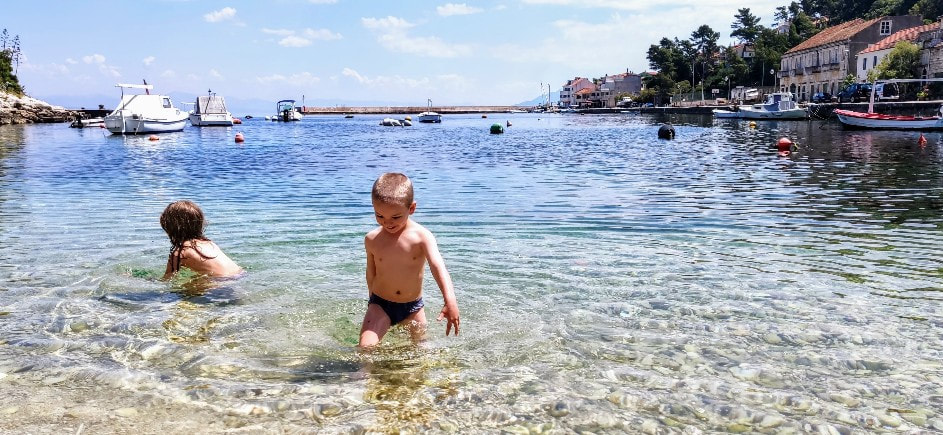How long does the swimming season last in Croatia?
If September is particularly warm in a given year, then the swimming season prolongs deep into October - in 2020 for example, we visited Dubrovnik at the end of October and the sea temperature was still 22°C so it was still pleasant to swim.
If it’s a really warm spring, you could take a dip in May, which is when locals usually open the swimming, even if it’s cooler.
Many of our guests ask us, when’s the best time to visit the beaches in Croatia?
If you like more refreshing temperatures for swimming, maybe you’d prefer June or September!
Here are specific temperature ranges for each month and season:
The Adriatic Sea temperature in the Winter
Adriatic Sea Temperature in the Spring
May is when things really start to warm up, and the sea temperatures typically double from the low temperatures in the winter. This is when it’s a more comfortable temperature for swimming, and people really start enjoying the sea.
Adriatic Sea Temperature in the Summer
Sea temperatures peak in July and August, where they can reach 25+ degrees celsius - very pleasant for swimming, and great temperatures for kids!
Adriatic Sea Temperature in the Fall
There are fewer crowds, the weather is typically nice, and the sea is usually still ok for a dip! In November, however, the temperatures usually start to rapidly decrease, so this is really the transition to winter.
The highest sea temperature measured in the Adriatic Sea in Croatia
Location and size of the Adriatic Sea
The Adriatic is a relatively small sea, but borders six countries: Croatia, Italy, Slovenia, Bosnia, Montenegro and Albania and was a very important passage throughout history to get to Western Europe.
It sits between the Dinarides and the Apennine mountain ranges and connects with the Ionian Sea, which then connects with the Mediterranean (so it’s included as a part of the Mediterranean Sea). Most of the major port cities that run along the Adriatic actually started out as ancient Greek or Roman settlements.
Size of the Adriatic Sea
We hope you’ve found this blog helpful in deciding the best month to visit Croatia and swim in the sea! We personally love the summer when it’s at its warmest because we have 3 small kids, but we also very much enjoy June and September. The Adriatic is such a clean, beautiful sea, we think you’ll love it (no matter the month you come).















